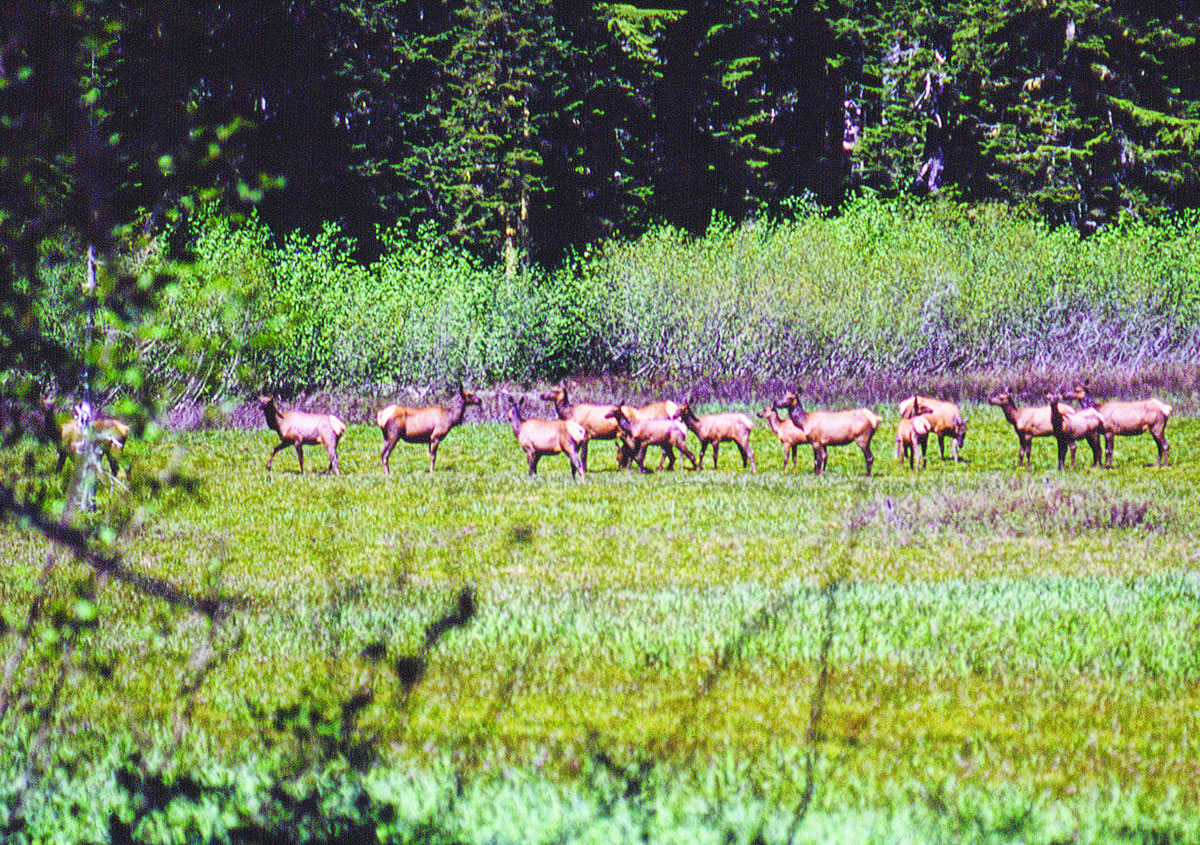Elk in the Mount St. Helens and Willapa Hills herds are homebodies. Unlike in the northern Rockies, where the animals migrate, local elk have small home ranges.
The Willapa Hills herd, in particular, moves little, according to state wildlife biologist Pat Miller of Longview, who has been working with the local herds for three decades.
“The Willapa Hills herd is not migratory,” Miller told the Elk Hoof Disease Public Working Group last month in Vancouver. “They’ll shift to higher elevations in the summer and shift back to lower elevations. That might be a matter of a mile or two.”
The working group includes county commissioners, academics, timber company representatives, state and federal land managers, businessmen and representatives of sportsmen’s and conservation organizations. It has met twice as the Department of Fish and Wildlife tries to learn what is causing elk hoof disease in Southwest Washington and what — if anything — can be done to cure the ailment or halt its spread.
The Mount St. Helens elk herd moves a bit more.
“In St. Helens, there might be movement from around Mount St. Helens itself, a shift to the west a bit due to extreme winter conditions,” Miller said. “We’re not talking very great distances. We capture these elk and we often find them pretty close to that same clearcut where we caught them. It’s not like a Montana or Wyoming scenario where they have larger migration patterns.”
Barb Moeller, a wildlife biologist for the Puyallup Tribe of Indians, said the tribes collared a couple of elk in the Cispus River area and the animals went to Mount St. Helens for the summer.
“I was predicting they’d migrate up into the Goat Rocks, but they went up into St. Helens,” Moeller told the group.
Estimating elk numbers
Work group member Axel Swanson of Cowlitz County, a serious elk hunter, asked the Department of Fish and Wildlife just how ballpark are its estimates of the number of elk in the local herds.
Swanson mentioned how there can be huge swings between salmon forecasts and actual returns.
Miller said he’s confident that updated populations estimates are solid.
“There’s a modeling technique involving the use of marked animals and a description of the habitat where it’s reobserved and what we do is try to develop a program that helps us understand the probability of us seeing elk in different habitat types,” he said. “It actually is scientifically pretty rigorous what we’ve developed in the last four years…We’re pretty optimistic at the strength of the new population estimate.”
Miller said older methods of population estimating were based on harvest.
“There were just a lot of assumptions in those harvest-based models that were hard to live with,” he added.
Hunting seasons too long?
Most members of the hoof disease working group who also are hunters are telling the department that elk seasons that begin in September and don’t end until December are too long and place too much stress on the herds.
“You take a small county like Wahkiakum, and you have this many seasons, it’s hard on the elk,” said Dan Cothren, a Wahkiakum County commissioner.
“The rate we’re going with these seasons we’re not going to have any elk,” he said. “That’s a fact. These elk are getting depleted in our county.”
Cothren, who works for a timber company, said forest practices are not making life any easier for elk. Forested areas are being logged right down to the farm land in the bottom of drainages, he said.
“They’re cutting everything they can get,” Cothren said. “The market is hot. The export market is grabbing every log they can get.”
Washington’s St. Helens herd management plan calls for reducing the elk population to get it to a level which existing habitat can sustain.
Swanson said he saw few elk when hunting in 2013 and talked with a lot of hunters who also saw few animals.
Mark Smith, who operates a private park in the Toutle Valley, also mentioned the scarcity of elk.
“Elk are a big economic benefit to Southwest Washington,” Smith said. “If hunters are not seeing animals, it’s not much fun.”
Hunters are going to lose interest and stop buying tags and licenses if the elk population plummets, he said.
“That’s a concern,” he said. “You need to put a good product out there.”




